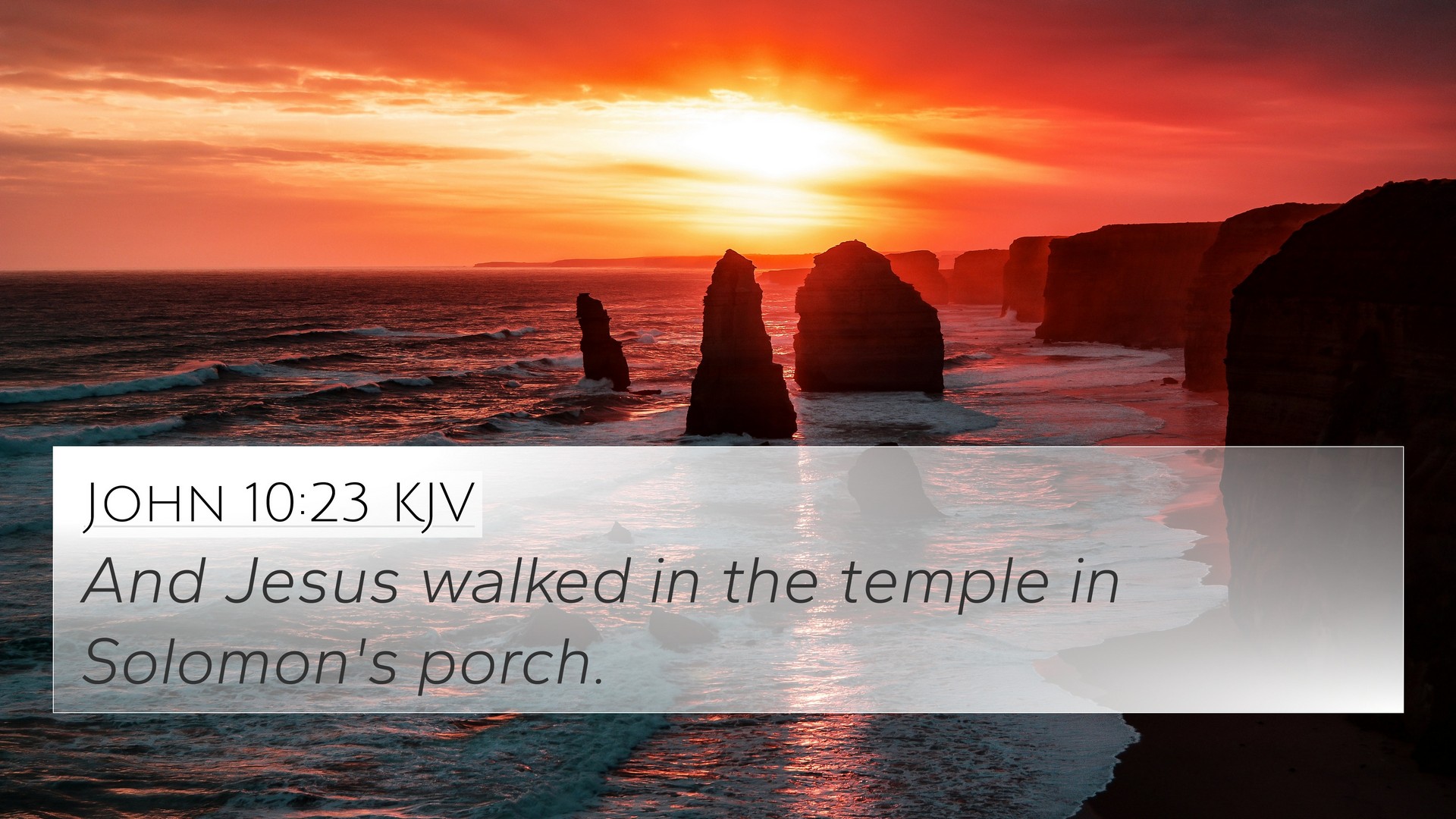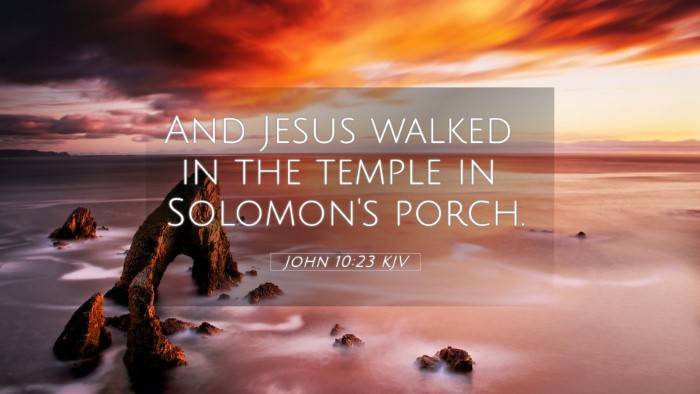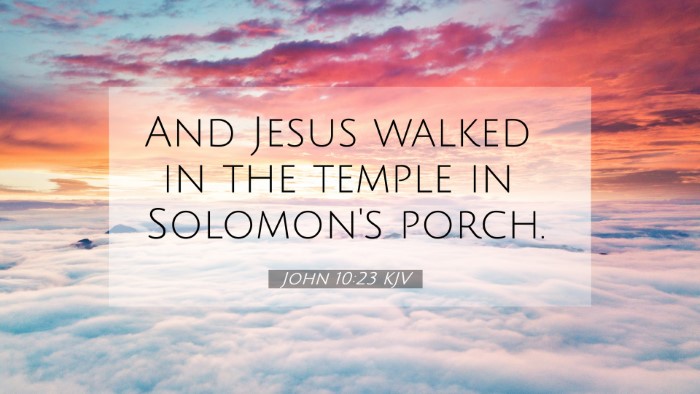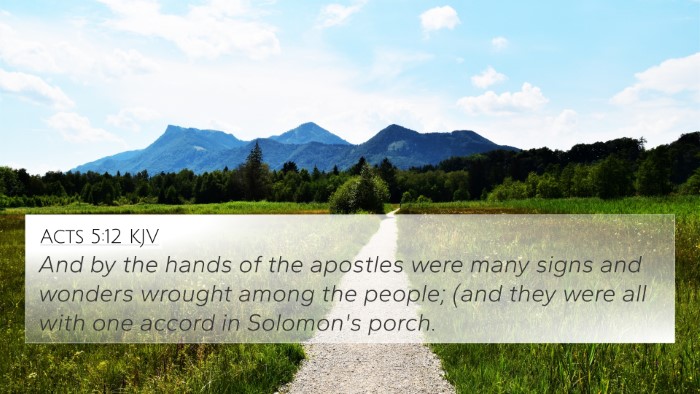Understanding John 10:23
John 10:23: "And Jesus walked in the temple, in Solomon’s porch."
This verse takes us to a significant moment in the life of Jesus, where He walks in the temple, specifically in Solomon's porch. Here, we delve into its meaning and implications as seen through various public domain commentaries.
Context and Setting
Matthew Henry notes that the temple was a central place of worship for the Jews, and Jesus walking there underlines His authority in that religious context. Albert Barnes emphasizes that Solomon's porch was a part of the temple often frequented by the people, thus indicating Jesus' openness to the public.
The Significance of Solomon's Porch
According to Adam Clarke, Solomon's porch was notable for its grandeur and historical significance, erected by Herod. Its mention underscores the Jewish heritage that Jesus was fulfilling and continuing. This location served not only as a physical space but also as a metaphor for Jesus' role as the true cornerstone of faith.
Thematic Connections
In examining this verse, we can derive several thematic connections across different Biblical texts:
- John 2:19 - Jesus speaks of the temple of His body, hinting at His divine nature.
- Matthew 21:12 - Jesus cleanses the temple, asserting His authority over it.
- Acts 3:11 - The apostles continue their ministry in the temple, establishing its ongoing significance.
- Hebrews 9:11 - Christ as the greater High Priest entering a more perfect tabernacle.
- John 7:14 - Jesus teaching in the temple during the Feast of Tabernacles, showing His engagement with the Jewish feasts.
- Luke 21:37 - Jesus spends nights in the temple, illustrating His commitment to His mission.
- Isaiah 56:7 - God's promise that His house will be a house of prayer for all nations, echoed in Jesus' ministry.
- Matthew 5:13-16 - Believers as salt and light, connecting the message of the Gospel with the essence of Jewish teachings.
- Mark 12:41-44 - The widow’s offering in the temple, demonstrating that worship is about the heart, not just the act.
- 2 Chronicles 7:12-14 - God's response to Solomon's dedication of the temple, emphasizing covenant and community.
Cross-Referencing with Other Bible Verses
The act of cross-referencing enhances our understanding of scriptures. Tools for Bible cross-referencing allow scholars and laypersons alike to connect themes, ensuring a holistic grasp of Christian doctrine. By exploring the inter-Biblical dialogue represented in the aforementioned verses, we can discern how Jesus' presence in the temple encapsulates both fulfillment and continuity.
Tools for Understanding Biblical Connections
When studying verses such as John 10:23, it is crucial to utilize resources such as:
- Bible concordances to find parallel verses.
- Bible reference guides that explicate themes across different books.
- Cross-reference systems that link scriptures harmoniously.
- Bible chain reference materials that promote deeper study and reflection.
How to Use Cross-References
Utilizing cross-references can greatly enhance the study of scriptures. Readers can learn:
- How to find cross-references in the Bible effectively.
- Identifying connections between the Old and New Testament.
- To perform a detailed comparative study of the Gospels.
- How specific themes reoccur throughout Biblical text.
Conclusion
John 10:23 serves as a vital link within the tapestry of scripture that reveals Jesus' mission and identity. By engaging with the profound historical and theological implications through commentaries and cross-references, one enriches their understanding of both this verse and the broader narrative of the Bible.
Further Study Suggestions
For a more in-depth exploration into the connections surrounding John 10:23, consider investigating:
- Bible verses related to Jesus' identity as the Good Shepherd.
- Cross-referenced themes in the Bible, particularly around worship practices.
- Comparative studies of Pauline epistles that reflect on Jesus' ministry.
As believers engage in this scriptural inquiry, the richness of the Bible's interconnectedness comes to light, promoting both personal and communal growth in faith.




